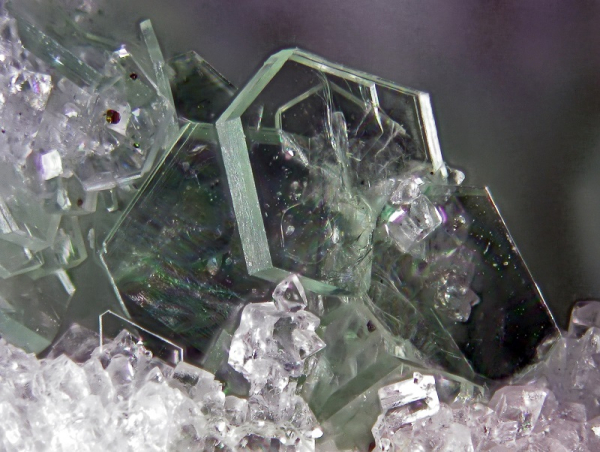Lengenbach Quarry, Fäld (Imfeld; Im Feld; Feld), Binn Valley, Wallis (Valais), Switzerland
KAl2(Si3Al)O10(OH,F)2
Crystal System: monoclinic
Colour: white to colorless, silvery-white, and tinged various colors by impurities
Lustre: vitreous, silky, pearly
Habitus: tabular, lamellar, foliaceous, microcrystalline ("sericite")
Hardness: 2½
Fracture: micaceous
Cleavage: perfect on {001}
Density: 2.83 g/cm3
Origin and geological occurrence: it is common in several geological enviroments. It occurs in felsic igneous rocks (e.g., granite, granite pegmatites) and metamorphic rocks (e.g., phyllite, schist, gneiss). It is formed in hydrothermal environments and it can be a detrital or authigenic component in sedimentary rocks.
Samples:





